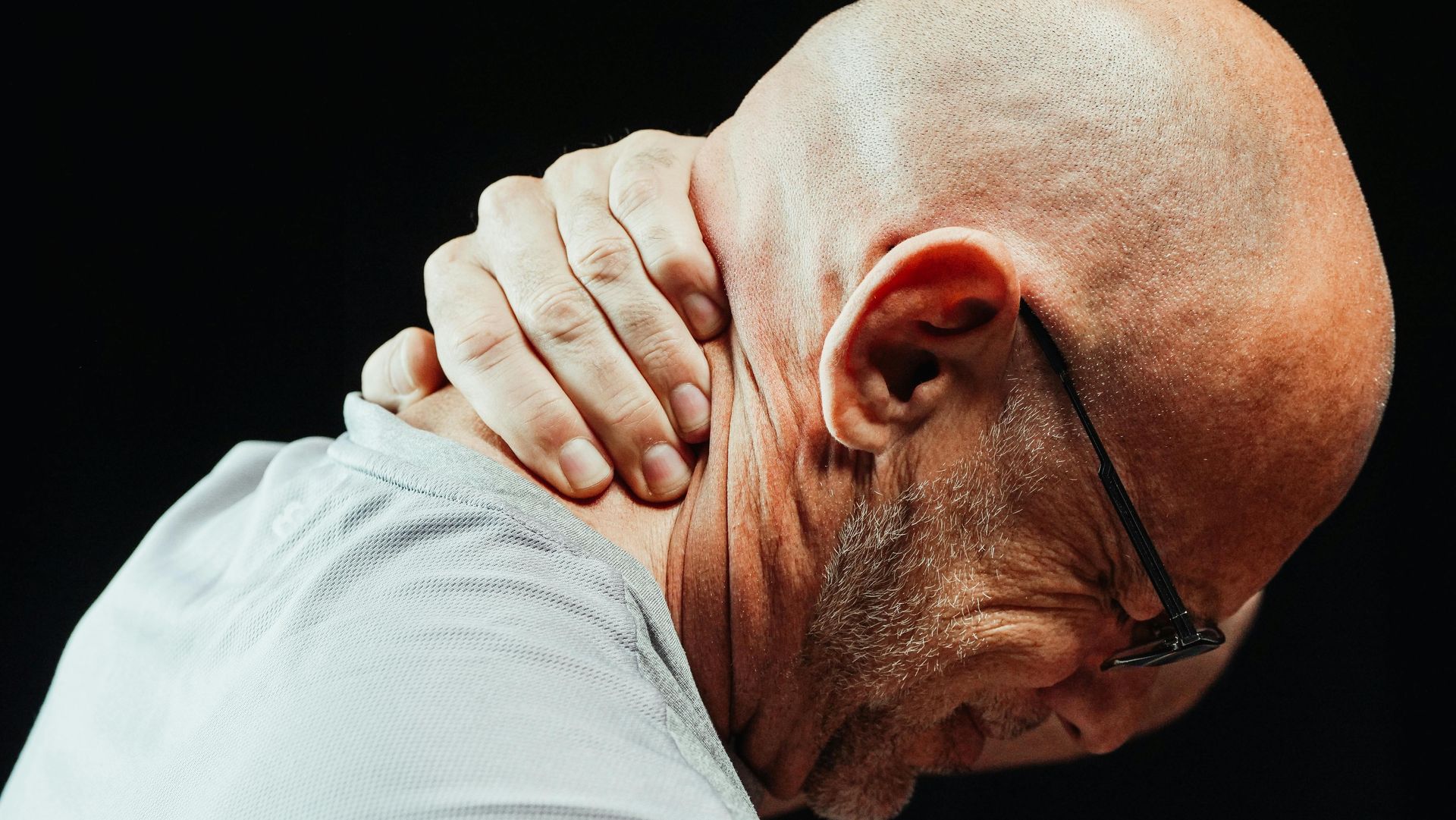5 Effective Ways to Relieve Chronic Knee Pain at Home
Fighting chronic pain on a daily basis? Find it difficult to go up and down stairs, mow the lawn, even enjoy a walk outside? We know how painful and debilitating it can be when you are dealing with chronic pain. At Chronic Care of Richmond, we believe that it’s possible to relieve chronic knee pain without surgery.
Here are a few helpful tips on how to treat and relieve pain symptoms at home.
1. Weight Loss
Eating right and keeping a healthy weight can be difficult — we get it! And, we know it’s easy to feel overwhelmed when trying to lose weight. Our recommendation is to take it one day at a time and focus on losing 5% of your body weight. Carrying extra weight is closely related to chronic knee pain, and losing just 5% of your body weight can have a positive effect on halting, or at the very least minimizing, the degeneration of knee cartilage.
Other studies have shown that losing 10% of your body weight, combined with moderate exercise, can significantly slow the progression of osteoarthritis. The simple formula to achieve healthy weight loss is clear: diet + exercise.
Focus on a lifestyle, not a diet, that is balanced, high in fruit, vegetables, and fiber. We support the choice for a Mediterranean-style diet, as recommended by the Arthritis Foundation. It’s not only delicious, but many ingredients can help reduce inflammation.
2. Exercise
We know exercise is part of a weight loss strategy, and it’s also an important component in countering knee pain through improved range of motion, the rebuilding of joints, and the strengthening the muscles in your legs. It may seem counterintuitive, but exercise can help in improving the symptoms of chronic knee pain.
It can be tough when you first start out, but the results are worth it, and you’ll start feeling better quickly. The American Heart Association recommends 150 minutes of moderate exercise a week — that’s just 20 minutes a day, and it can make a huge difference in alleviating chronic knee pain symptoms. Swimming is an excellent choice for aerobic exercise, for example.
Of course, you should not ‘work through the pain’ no matter what; listen to your body. If you notice any of the following warning signs, stop and consult a physician:
- If exercise causes a sudden swelling of the knee, stop immediately.
- Severe pain. Try standing on one leg. If it’s too painful, it’s time to pull the plug. Alternatively, rate your pain on a scale of 1-10. Over 5? Not a good sign.
- Don’t continue if you feel unstable and feel that it’s possible you may fall down at a moment’s notice.
3. Cold Procedure
Find yourself in pain and feeling inflammation? Applying a cold compress is easy, inexpensive, and will help lessen the symptoms of your ailment.
Cold treatments slow circulation and reducing swelling. This option is particularly useful when experiencing acute pain. Try applying a cold compress following exercise or after returning home from a long day of walking or activity.
4. Go Minimalist!
Minimalist footwear is more than just a craze. Studies have shown that minimalists shoes can lower knee pain and are a far more effective option compared to orthotics, which are often (incorrectly!) prescribed by podiatrists. Study results include a 36% reduction in pain, as well as an 18% reduction of force to the medial knee.
You don’t need to buy a brand new pair of expensive shoes to reap (some) of the rewards. Try walking barefoot at home as often as possible, as it reduces the load placed on your joints.
Note: caution must be taken when using minimalist footwear for exercise, especially if you are a keen runner already. Minimalist shoes require you to ‘relearn’ your gait, which means usage should be introduced gradually.
5. Add Ginger to Your Diet
Ginger has several amazing qualities that can help stem pain and inflammation. It has been used medicinally for thousands of years. In Ayurvedic medicine, it is known as “Vishabhesaj”, which can be loosely translated as “universal medicine”. It has been used to combat asthma, stroke, diabetes, constipation, and other conditions.
Try using ginger, either powdered or fresh, in tea, as an ingredient in meals, even added to water and lemon for a delicious and refreshing beverage.
There are many studies which have shown that ginger is widely employed as a pain relief measure. Modern medical studies suggest Zingiber officinale’s efficacy as an anti-inflammatory:
- Ginger and pain relief in dysmenorrhea. In a randomized trial of 120 students showing moderate to severe symptoms of menstrual cramp, ginger (in capsule form) was shown to have a statistically significant effect on both the duration and severity of pain.
- Antioxidant supplements (including ginger) and knee osteoarthritis. Review of studies using supplements to treat osteoarthritis, with the conclusion being that there is evidence to believe antioxidants can alleviate pain and improve function in knee osteoarthritis.
- Can ginger help fight rheumatoid arthritis? This interesting article suggests that ginger can go beyond symptomatic relief and offer a potential avenue for effective treatment of rheumatoid arthritis.
Chronic pain is a common affliction suffered by over 100 million Americans, with 19.5% suffering from knee ailments in particular. In fact, chronic pain is the main reason behind most doctor visits and it is estimated 90% of people will suffer at least one episode of chronic pain in their lifetime. In 2011, a report by the Institute of Medicine (IOM) found that chronic pain costs the United States up to $635 billion per year in lost productivity and medical treatments combined.
Many patients who suffer from chronic knee pain assume that surgery is the only viable option. We disagree: surgery should only be considered as a last resort. Results with surgery are often mixed, with many patients experiencing very little relief from their symptoms. Furthermore, surgery is only suitable for certain types of patients.
We encourage you to try some of these at-home recommendations to relieve chronic joint pain at home!



Connect With Us
LOCATION
8639 Mayland Dr #105, Henrico, VA 23294
PHONE
BUSINESS HOURS
Mon, Wed, Thu, Fri - 9 am to 5 pm
Tuesday - 9 am to 1 pm

